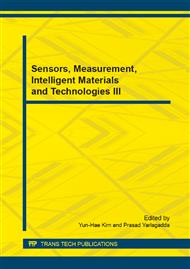[1]
D. E. Agosto: A model of young people's decision-making in using the Web, Library & Information Science Research, Vol. 24 (2002), pp.311-341.
DOI: 10.1016/s0740-8188(02)00131-7
Google Scholar
[2]
P. Kotzé, K. Renaud, J. Biljon: Don't do this – Pitfalls in using anti-patterns in teaching human–computer interaction principles, Computers & Education, Vol. 50 (2008), pp.979-1008.
DOI: 10.1016/j.compedu.2006.10.003
Google Scholar
[3]
R. Nachmias: A research framework for the study of a campus-wide Web-based academic instruction project, The Internet and Higher Education, Vol. 5 (2002), pp.213-229.
DOI: 10.1016/s1096-7516(02)00103-3
Google Scholar
[4]
P. Brey, J. H. Søraker: Philosophy of Computing and Information Technology, Philosophy of Technology and Engineering Sciences, 2009, pp.1341-1407.
DOI: 10.1016/b978-0-444-51667-1.50051-3
Google Scholar
[5]
T. E. Webster, J. B. Son: Doing what works: A grounded theory case study of technology use by teachers of English at a Korean university, Computers & Education, Vol. 80 (2015), pp.84-94.
DOI: 10.1016/j.compedu.2014.08.012
Google Scholar
[6]
R. Godbold, A. Lees: Ethics education for health professionals: A values based approach, Nurse Education in Practice, Vol. 13 (2013), pp.553-560.
DOI: 10.1016/j.nepr.2013.02.012
Google Scholar
[7]
P. Pucer, I. Trobec, B. Žvanut: An information communication technology based approach for the acquisition of critical thinking skills, Nurse Education Today, Vol. 34 (2014), pp.964-970.
DOI: 10.1016/j.nedt.2014.01.011
Google Scholar
[8]
C. Yoon: Ethical decision-making in the Internet context: Development and test of an initial model based on moral philosophy, Computers in Human Behavior, Vol. 27 (2011), pp.2401-2409.
DOI: 10.1016/j.chb.2011.08.007
Google Scholar
[9]
N. Katuk, J. Kim, H. Ryu: Experience beyond knowledge: Pragmatic e-learning systems design with learning experience, Computers in Human Behavior, Vol. 29 (2013), pp.747-758.
DOI: 10.1016/j.chb.2012.12.014
Google Scholar


